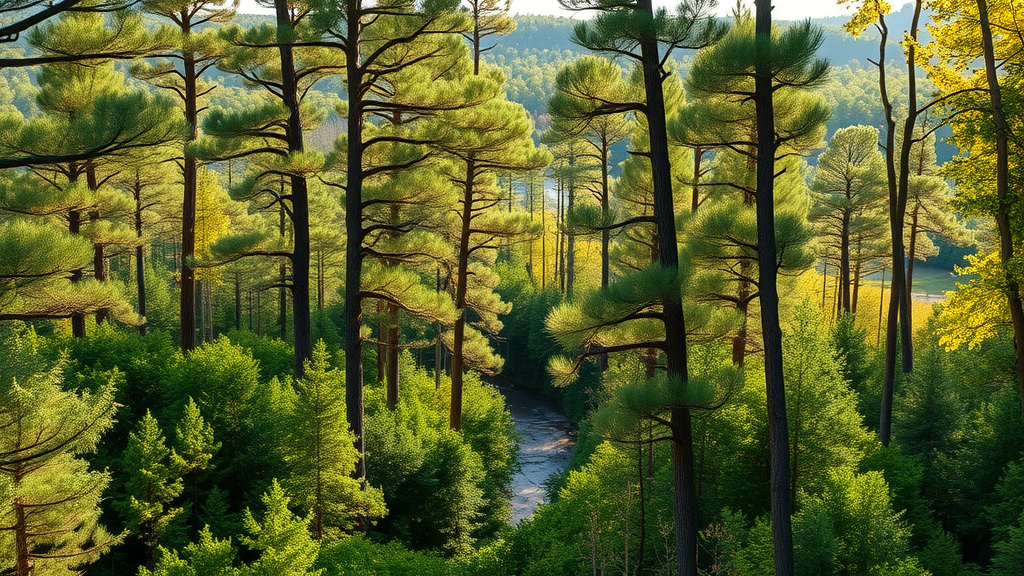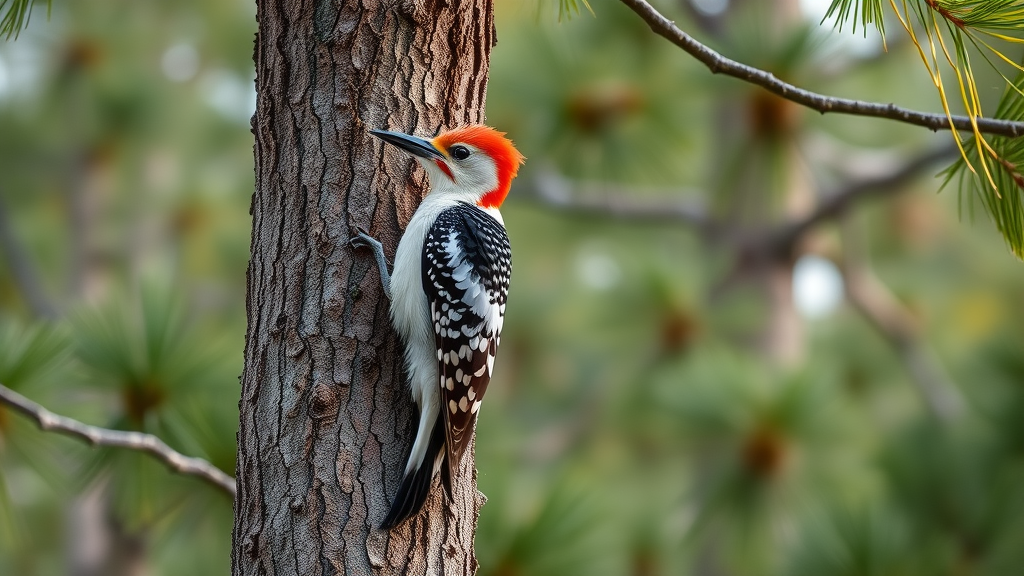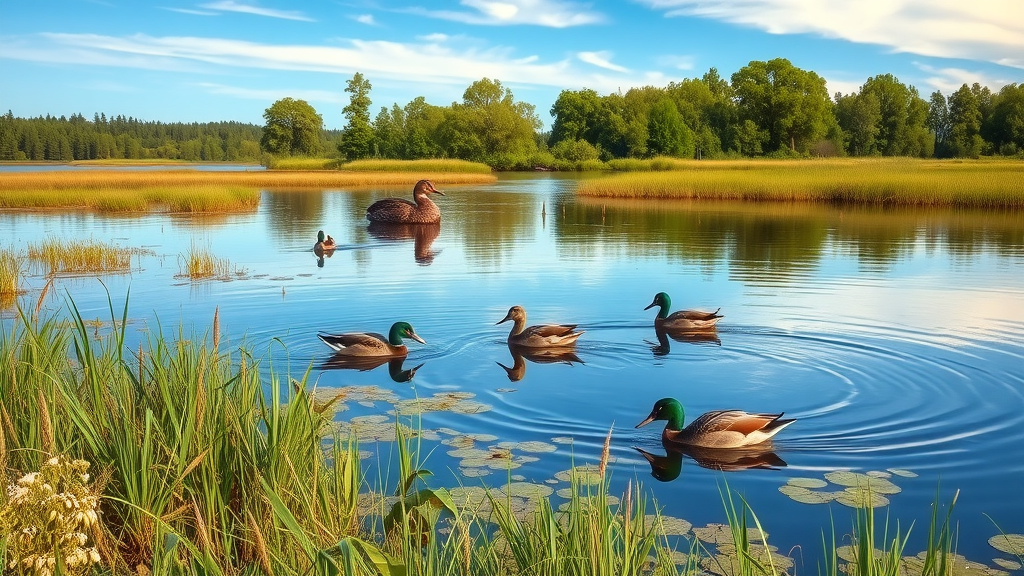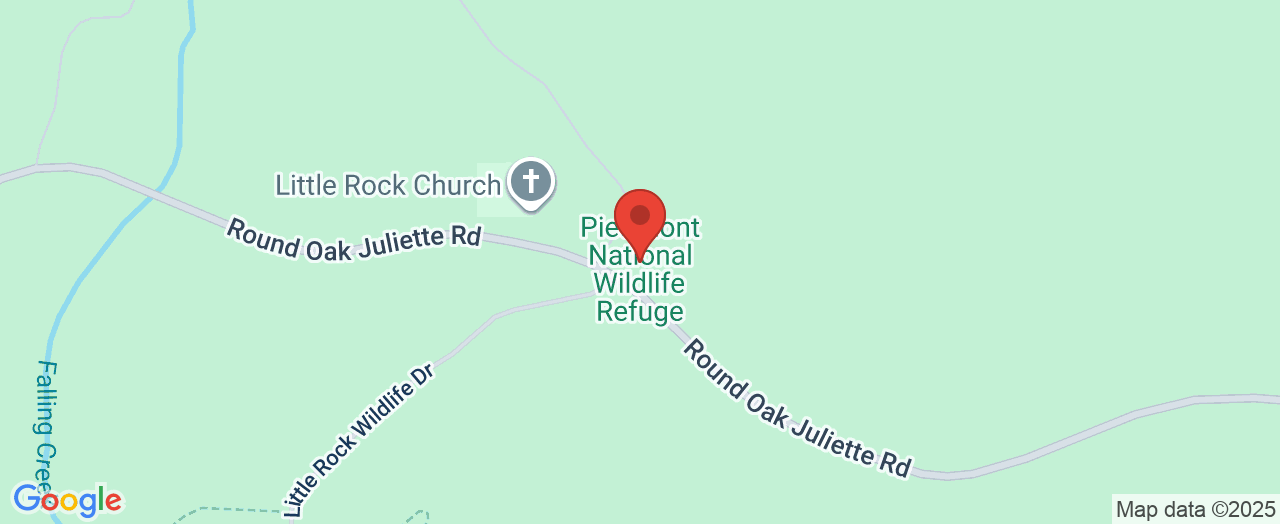Unveiling a Georgia Treasure: Why the Piedmont National Wildlife Refuge Matters More Than Ever
Imagine a landscape once stripped bare by decades of intense farming, so scarred by erosion and loss that it seemed beyond hope. Now picture that same ground teeming with a vibrant forest rising up from the ashes of exhaustion—a living testament to restoration and resilience. The story of the Piedmont National Wildlife Refuge isn’t just a story about reclaimed land; it’s a case study in how vision and stewardship can create a haven for wildlife and people alike. Located in central Georgia, this 35,000-acre sanctuary isn’t simply a patch of protected trees—it pulses with life, ecological wisdom, and hope for conservation’s future.
When we talk about wildlife refuges, stories of transformation like this one are often overlooked. Yet, the value hidden within their boundaries is profound. The Piedmont National Wildlife Refuge doesn’t just house forests, streams, and rare birds; it’s a living classroom on how human impact, guided by well-planned intervention, can heal even the most damaged landscapes. As you dig into the details of this refuge's rebirth and role in Georgia’s ecology, you’ll uncover why knowing its story is crucial—not just for nature lovers, but for anyone concerned with the health of our planet and the possibilities of regeneration.

How Forests Return: The Science and Significance of Ecological Restoration at Piedmont
The concept of restoring an entire ecosystem from the brink of irreversible decline is both daring and rooted in careful science. Since its creation in 1939, the central mission of the Piedmont National Wildlife Refuge has been to show that wildlife and rich habitat could be brought back to what was once eroded, worn-out farmland. The challenge wasn’t just to plant trees or reintroduce animals; it was to engineer a recovery on a massive scale—turning back time, repairing soil, reestablishing native forests, and ensuring everything from creek bottoms to pine ridges could support a thriving natural community again.
This ambition came with real risks: without effective management, invasive species might overrun fragile new growth, and poorly restored habitats could collapse, failing both wildlife and public trust. The refuges' approach is deliberate—using tools like prescribed burning, thinning, and invasive species control not only to regenerate but to actively shape conditions for long-term biodiversity. Loblolly pines now dot the uplands, hardwoods have returned to the valleys, and carefully tended wetlands support journeys of migrating waterfowl. Each of these successes is a thread in a larger proof: that even landscapes written off as depleted can be revived with the right science, patience, and stewardship.

Transforming Land and Lives: The Practical Benefits of a Revitalized Refuge Ecosystem
What does the restored landscape of the Piedmont National Wildlife Refuge offer to the community and the region? First and foremost, it stands as a living example of what effective land management can achieve in the Southeastern United States. The refuge hosts not only loblolly pine stands and hardwood forests but also intricate wetlands shaped by beaver activity and clear streams. The outcomes for local biodiversity are significant: the return of migratory birds, robust populations of game and non-game species, and the establishment of the endangered Red-cockaded woodpecker, a barometer species for forest health and conservation success.
But the benefits don’t stop with wildlife. For hunters and anglers, regulated access provides opportunities to connect with nature while supporting sustainable practices—activities that rely on the refuge’s careful balancing of habitat needs and public enjoyment. The refuge also offers research and educational platforms, contributing to broader ecological knowledge while inspiring future generations to continue the work of restoration. Families, students, scientists, and outdoor enthusiasts each find something essential at Piedmont: a clearer vision of how land can be healed, enjoyed, and protected for all.
From Barren Soil to Forest Canopy: Lessons from the Refuge’s Historical Timeline

The transformation of the Piedmont National Wildlife Refuge didn’t happen overnight. A look at its origins reveals why its story is so powerful. When established during the late 1930s, the land was a cautionary tale—a landscape battered by cotton production, its topsoil eroded away, and its streams sediment-choked. The U.S. Fish & Wildlife Service saw an opportunity not just to rehabilitate land but to create a demonstration project for public and private landowners across the region.
Decades of active management followed: reforestation projects, control of invasive species, and hands-on wildlife management. Over time, the earth’s wounds began to mend. What was once bare ground now supports a blend of pine and hardwood communities. Clear, thriving creeks and beaver-engineered wetlands are now central to the refuge’s character, providing habitat that was unimaginable during its earliest days. That journey—marked by patient, science-based intervention—offers hope and inspiration for other restoration efforts nationwide.
Wildlife to Watch: A Refuge for Rare and Remarkable Species
Piedmont National Wildlife Refuge is renowned not only for its scenic beauty but for its crucial role in protecting species that might otherwise be lost to history. The standout among these is the Red-cockaded woodpecker, an endangered bird whose presence signals the health of mature pine ecosystems. Management strategies tailored for this species—like selective timber thinning and prescribed fires—don’t just suit woodpeckers; they open up habitats for countless other plants and animals, creating ripple effects across the food web.

The refuge also runs year-round programs targeting invasive species, which if unchecked could destabilize these hard-won gains. By keeping non-native species at bay and encouraging native flora, the refuge supports resilient, diverse habitats. Visitors frequently encounter a surprising variety of life: migratory waterfowl stopping in pristine wetlands, deer and beavers in forest clearings, and a chorus of birdsong unique to this part of Georgia. For anyone interested in the intersection of conservation, ecology, and real-world outcomes, Piedmont is an ever-evolving case study.
Piedmont National Wildlife Refuge’s Commitment to Innovative Conservation Practices
At the heart of the Piedmont National Wildlife Refuge’s philosophy is a belief in active, science-driven management. Forest stand improvement, prescribed burning, and habitat regeneration aren’t just buzzwords here—they’re practical tools that help sustain wildlife and guide the recovery of ecosystems on a grand scale. Each management decision is designed with wildlife health at its core, from thinning pine forests to prevent overcrowding, to the careful monitoring and control of invasive species.
This holistic approach reflects the refuge’s mission to serve as a model for land restoration across the Southeast. By balancing human activities like hunting and fishing with the necessity of species protection, the refuge demonstrates a unique commitment to both people and nature. The efforts on display here have far-reaching impacts: fostering new generations of land stewards, contributing to public science education, and offering hope that even degraded lands have a future if managed with care and vision.
Visitors' Voices: Experiencing the Beauty and Challenges of Piedmont’s Wilderness
Whether it’s for a quiet day by the lake or an exploration into Georgia’s wildest landscapes, visitors provide an honest account of what the Piedmont National Wildlife Refuge has to offer. Their stories reveal the true depth of connection between people and place, highlighting both the natural beauty and occasional barriers found in a thriving, managed landscape.
Really beautiful place to visit. I love going to the lake, though it is mostly gravel roads to get out there. Most gorgeous place to visit!
Testimonies like this underscore a broader truth: the refuge inspires awe, quiet reflection, and wonder in those who spend time there. While some may note challenges—like gravel roads or seasonal changes to fishing conditions—the overwhelming message is clear. To experience what this Georgia refuge offers is to witness ecological restoration in action, making the journey as rewarding as the destination. For anyone eager to reconnect with nature, Piedmont National Wildlife Refuge promises inspiration and satisfaction at every turn.
Learning from Georgia’s Conservation Gem: Why Piedmont’s Restoration Story Inspires Action
The resurgence of the Piedmont National Wildlife Refuge has shaped not only the forests and wetlands of central Georgia but also the wider conversation on conservation across the region. Serving as proof that ecological renewal is possible, the refuge’s multi-decade transformation offers a powerful reminder of what science-guided management can achieve—even in places thought lost to overuse. Today, with robust wildlife populations, thriving habitats, and a growing reputation as an outdoor classroom, Piedmont stands as a standard-bearer for land restoration and public engagement.
For those inspired by living examples, the refuge’s continued success is bolstered by its dedication to forest management, invasive species control, and habitat regeneration. Piedmont’s approach underscores the idea that restoring land strengthens both ecosystems and communities. By protecting places like this, we foster a future where nature and people can thrive together—making the value of the refuge, and its ongoing story, more urgent and relevant than ever.
Contact the Experts at Piedmont National Wildlife Refuge
If you’d like to learn more about how the Piedmont National Wildlife Refuge could benefit your understanding of restoration and conservation, contact the team at Piedmont National Wildlife Refuge.
📍 Address: 718 Round Oak Juliette Rd, Hillsboro, GA 31038, USA
📞 Phone: +1 478-986-5441
🌐 Website: http://www.fws.gov/piedmont/
Piedmont National Wildlife Refuge Location and Availability
🕒 Hours of Operation:
📅 Monday: 7:30 AM – 5:00 PM
📅 Tuesday: 7:30 AM – 5:00 PM
📅 Wednesday: 7:30 AM – 5:00 PM
📅 Thursday: 7:30 AM – 5:00 PM
📅 Friday: 7:30 AM – 5:00 PM
📅 Saturday: ❌ Closed
📅 Sunday: ❌ Closed

 Add Row
Add Row  Add
Add 





Write A Comment